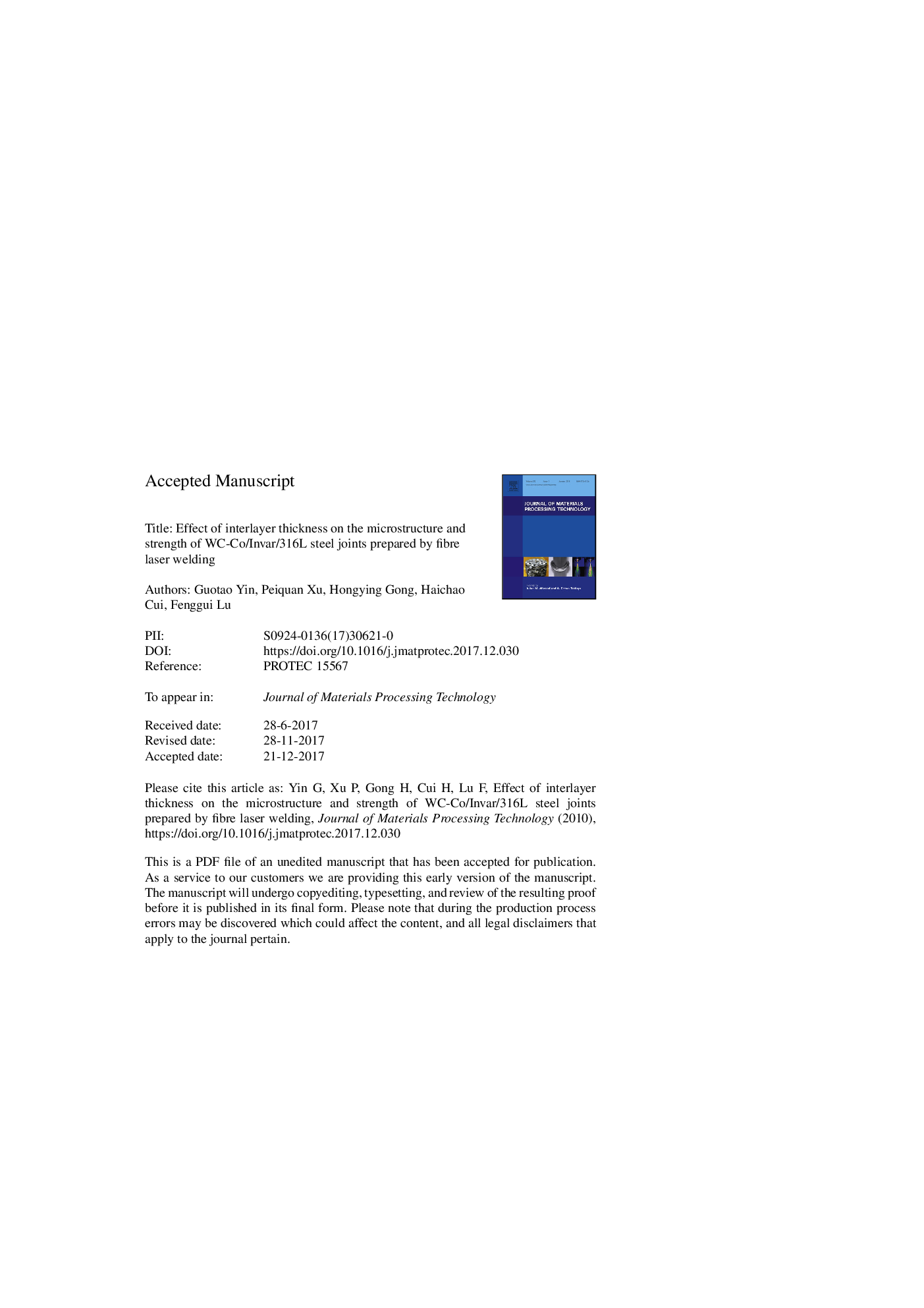| Article ID | Journal | Published Year | Pages | File Type |
|---|---|---|---|---|
| 7176445 | Journal of Materials Processing Technology | 2018 | 35 Pages |
Abstract
Increasing the thickness of the Invar (Ni42Fe50.9C0.6Mn3.5Nb3) interlayer from 1 to 1.5â¯mm resulted in a continuous metallurgical bonding, free of voids and oxide films. Invar as a pre-placed buffer also led to higher bending strength because of the stress relaxation. When the thickness was increased to 2â¯mm, the porosity in the fusion zone increased and cracks developed near the fusion boundary on the WC-Co side, lowering the strength. The fusion boundary, heat affected zone and the fusion zone on the WC-Co side were susceptible to cracking. Transmission electron microscopy revealed high densities of dislocations. Energy dispersive spectroscopy suggested that long-range solute diffusion occurred inside the WC grains and at the WC/Fe (Ni)/WC interfaces.
Related Topics
Physical Sciences and Engineering
Engineering
Industrial and Manufacturing Engineering
Authors
Guotao Yin, Peiquan Xu, Hongying Gong, Haichao Cui, Fenggui Lu,
